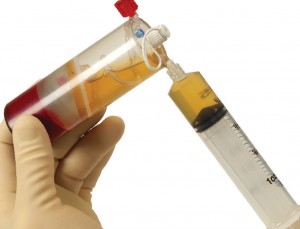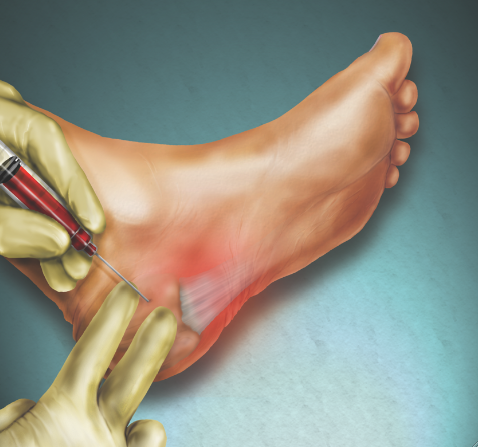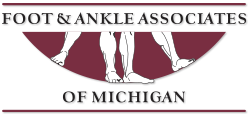If you feel pain in your heel, you might think you have a heel spur. It’s a common assumption — and a heel spur can cause foot discomfort. However, only 50 percent of people who have heel spurs actually feel any pain because of it.
“A heel spur is often an incidental finding on an X-ray. You can have one even if you don’t have heel pain. When we’re treating people, we don’t focus on the spur because often the spur doesn’t have to go away for the pain to resolve,” says Dr. Giordano of Foot & Ankle Associates of Michigan.
A heel spur won’t trouble you unless it is prominent beneath your foot, and you can feel it under the skin. If you concentrate too much on a heel spur, you could miss the true underlying problem, he says.
Where does the pain start?
The foot is a complex structure of ligaments, tendons, and bones, so heel pain or foot pain can come from a variety of sources, Dr. Giordano says. “Oftentimes, it’s not related to having a heel spur. Plantar fasciitis or any other entity that causes inflammation around the heel can cause heel pain,”
Dr. Giordano says the first step is to understand where in the foot you feel the most pain: Is it in the heel, arch, or toes? It is important for the diagnoses and treatment to understand where a person feels the most tenderness.
What’s causing your foot pain?
- Repetitive overuse. This is a leading cause of heel pain. People at risk are those who walk heavily on their feet, run long distances, or carry extra weight. You are also susceptible to heel bone inflammation and discomfort if you have a tight Achilles tendon, which connects the calf muscle to the heel bone.
- Impact injuries. These can cause deep bruises on either the fat pad or the ball of the foot that makes it feel like you’re walking on a pebble. Heel bone fractures – either from a fall from a significant height or new, rigorous, or repetitive overuse – can also cause pain.
- Running, jumping, or other strenuous activities. These can cause discomfort and inflammation in the ball of the foot.
- Wearing high heels. Morton’s neuroma, most commonly found in women who wear high heels, is a thickening of tissue around the nerve between the bases of the toes. It leads to foot pain and sensations of pain and numbness in the ball of the foot.
- Arch pain. Arch pain, most often from plantar fasciitis, affects the heel and arch of the foot. Pain is usually more noticeable first thing in the morning or when one starts to walk after sitting for long periods of time, which is also called “start-up pain.”
- Other assorted causes. Inflammation and swelling from arthritis can often cause pain. Arthritis typically affects the middle part of the foot and big toe joint. However, bunions, hammer toes, claw toes, turf toes, and ingrown toenails can also cause discomfort.
Getting back on your feet
Full recovery from heel pain takes, on average, six months to resolve with appropriate treatment, Dr. Giordano says. But the odds are in your favor – only about 5 percent of people fail to improve with some form of treatment. You can help yourself by following these tips:
Stretch. Most heel pain syndromes have similar treatment – the mainstay is a home stretching program. We teach people to stretch daily with good technique and frequency. Using a night splint to keep the ankle at 90 degrees can help the morning pain, and make the first-morning stretching session easier.
Wear appropriate shoes for your activity. “If you’re going running, wear running shoes; going on a hike, wear hiking shoes,” Dr. Giordano says. “Wear the appropriate footwear for whatever activity you’re doing to help support your foot properly.”
Buy the right shoes. Choose shoes that don’t rub over any part of the foot or against any bunions or bone prominence. Use extra padding or arch support to alleviate sore bones and relieve pressure.
Show your feet some love. Take anti-inflammatories and ice your foot for pain. Wear over-the-counter arch supports to cushion your feet and absorb the shock of each step.
Take a little break. Dr. Giordano recommends minimizing impact activities such as Zumba, running, or jumping rope as much as possible. “There are many other exercises that can get our heart rate up while allowing us to take it easy on our feet: bicycling, swimming, and upper extremity exercise for the chest, arms, back, and shoulders can help keep muscle up while keeping stress on the feet down.”
What if nothing’s working?
Despite our best intentions, some heel pain does not respond to normal conservative therapy, and more aggressive means of treatment are needed. “Many of our colleagues suggest surgery once patients have exhausted most conservative therapy.” Surgery involves cutting the plantar fascia ligament away from the heel bone/bone spur to release the tension. “Although surgery is sometimes necessary,” says Dr. Giordano, “at Foot & Ankle Associates of Michigan we’re using a novel, 21st-century treatment which is non-surgical, and is having greater than 80% improvement in heel pain in our patients who may have been suggested to have surgery performed on them by another doctor.”
Dr. Giordano’s therapy is called platelet-rich plasma injection, where a small amount of blood is removed from the patient’s arm and the blood is then ‘spun down’ in a centrifuge to remove the platelets, which is then injected back into the patient’s heel. This procedure is typically performed in the office setting, although some insurance companies mandate that it is performed in an outpatient surgery center.
“Most everyone knows that platelets are our ‘clotting cells,’ but what they don’t know is that platelets play a huge role in the inflammatory process, healing inflammation much better than cortisone injections can. This has been proven in several scientific studies.”
The procedure is relatively painless and involves performing a novocaine-type injection to the heel to numb the area so that there is minimal discomfort when the platelets are re-injected back into the site. “I now have patients that have had their platelet injection 4-5 years ago, and they are still pain-free in their heel, with no surgery,” says Dr. Giordano.
Platelet-rich plasma injections are being performed in the practice’s Shelby Township and Flint locations currently, and the doctors are making plans to train the entire staff so that this revolutionary procedure can be performed in all 6 of Foot & Ankle Associates of Michigan’s locations.
Please call 586-580-3728 (Shelby Township) or 810-230-9955 (Flint) to set up an appointment to discuss whether platelet-rich plasma is an option for your nagging heel pain. The staff of Foot & Ankle Associates of Michigan looks forward to participating in your care.



